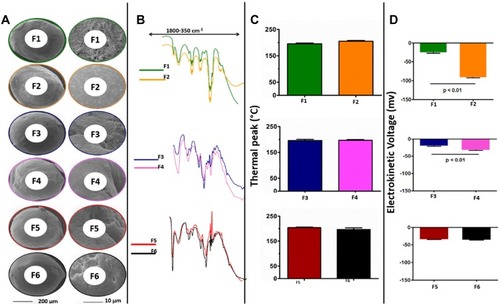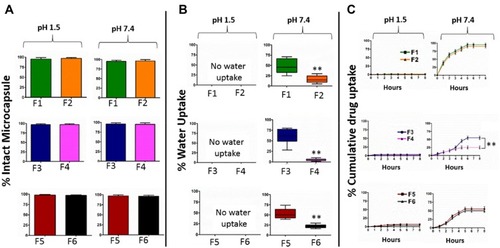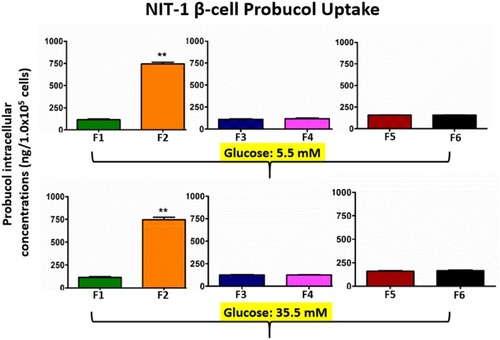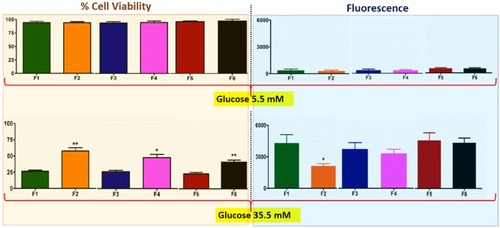Figures & data
Figure 1 SEM images of microcapsule F1–F6 (A), FTIR-chromatograms (B), thermal peaks (C), and electrokinetic voltage (D). Data are mean ± SEM, n=3. F2, F4 and F6 are formulation matrices with UDCA, probucol and addition of NM30D, RL30D or RS30D polymers, respectively. F1, F3 and F5 are corresponding controls without UDCA.

Figure 2 Mechanical stability (A), osmotic stability (B) and probucol release profile from the microcapsules at pH 1.5 and 7.4. Data are mean ± SEM, n=3. **p<1%.



